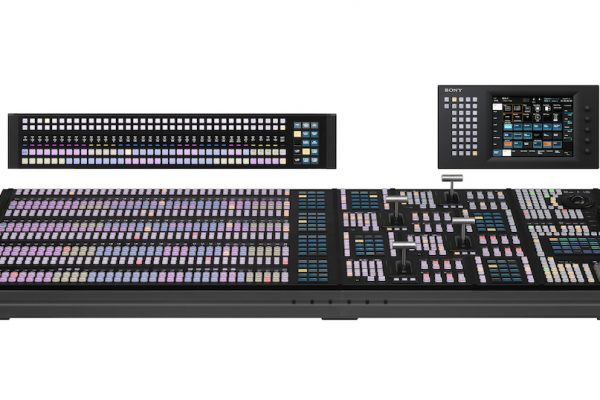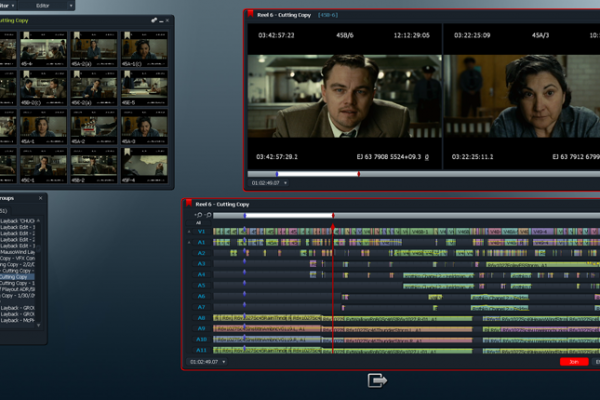Sound Devices, specialists in audio and video products for production, introduces its latest PIX recorders, PIX 270i and PIX 250i, at the 2014 NAB Show (Booth C2546). PIX 270i and PIX 250i seamlessly replace tape- and disc-based video decks for a complete offering that addresses a range of multiple-source video productions, including fast-paced, mission-critical studio applications, live sports and events, and mobile production.
The PIX 270i (pictured above) and PIX 250i recorders offer significant advantages and time-savings to production workflows, providing tapeless, file-based recording and playback with the ability to access and transfer high-quality files over Ethernet. The units record edit-ready Apple ProRes or Avid DNxHD files and allow simultaneous multiple-drive recording, giving production staff peace of mind with their rock-solid redundancy and backup capabilities (four drives for PIX 270i and two drives for 250i). Their extensive audio capabilities, including 64 channels of both MADI audio and Dante audio-over-Ethernet for PIX 270i, and PIX 250i’s 16 tracks of audio, make each unit a comprehensive, cost-effective replacement for complex video servers and an effective tool for high-performance video production.
The PIX recorders offer 3G-SDI (12-bit, 4:4:4) and HDMI I/O, and can record at numerous data rates. Full RGB Apple ProRes 4444 (330 Mbps) and low data rate proxy files (36 Mbps) are available. Files are ready for import directly into popular editing environments, including Avid, Final Cut Pro and Adobe Premiere Pro, eliminating time-consuming transferring and transcoding.
Up to four drives, two SATA drives in PIX-CADDYs and two SATA-connected drives can be connected to the PIX 270i. All four drives can be recorded to simultaneously or sequentially for redundancy and long-form programs. For PIX 250i, up to two SATA drives in PIX-CADDYs can be connected to the easily accessed front-panel drive bays. In the same fashion, both drives can be recorded to simultaneously or sequentially. This redundancy in local, removable storage devices, coupled with standard, Ethernet-based file-transfer features, further reduces steps in the production workflow. Recording to multiple drives offers immediate file backup, eliminating time-consuming post-record copying. Gigabit Ethernet network ports enable remote access to recorded files and the ability to transfer these files quickly into a post-production environment.
Both products feature extensive network connectivity and can be connected over Ethernet for simultaneous grouped recording and playback, creating a cost-effective scalable solution that addresses the multi-camera recording needs of today’s production. Its built-in Web server, PIXNet offers browser-based transport and setup-menu control of any number of units. In addition, PIX 270i features built-in multiple unit synchronization, offering simultaneous, frame-accurate recording and playback, ideal for multi-camera production and live event multi-screen playback. Any number of units can be grouped and controlled as a single system from either the hardware or the built-in Web-based control panel. Frame accurate sync works with other PIX 260i and PIX 270i recorders. The PIX 250i can be grouped with other PIX 250i, PIX 260i and PIX 270i recorders. The PIX can also be controlled by external RS-422 (Sony 9-pin compatible) controllers as well as via its GPIO port.
The PIX 270i offers extensive audio capabilities, with 64 record tracks (32 tracks at 96k), eight channels of analog audio, eight channels of AES digital audio, 16 channels of embedded SDI audio, and 64 channels of both MADI (coaxial and optical) audio and Dante audio-over-Ethernet. The PIX 250i features eight channels of analog audio, eight channels of AES digital audio and 16 channels of embedded SDI audio, and supports up to 16 tracks of audio.
With its built-in Ambient Clockit time-code generator/reader with genlock output, the PIX line is designed for multiple-camera and double-system sound applications. In addition to generating ultra-stable time-code, time-code can be read from the SDI stream, the HDMI stream or external sources. PIX 270i and PIX 250i include a high-performance hardware scaler and frame-rate converter. Regardless of the incoming signal, PIX records the signal after up-, down- or cross-conversion at the same or different frame rate. Hardware-based 3:2 pull-down removal is also available. Its convenient 1/2-rack, 2-U chassis dimension allows it to be easily integrated into any existing environment. It is powered by 10-27 VDC through a four-pin XLR connector. The PIX 270i offers a secondary DC input for power supply redundancy.
The newest additions to the PIX line of products feature Sound Devices’ proprietary PowerSafe technology. PowerSafe circuitry has a built-in 10-second power reserve. In the event of power loss the unit continues to operate for up to 10 seconds, then stops any file operation and shuts down. This ensures that a complete power loss has no effect on the recording.
Both the PIX 270i and PIX 250i have precision five-inch IPS, 800- x 480-pixel displays for setup menu access and video monitoring. The high-accuracy display, with its peaking, false color and zoom functions, is perfect for framing, exposure and focus evaluation.
Also being introduced is the 970, Sound Devices first-ever dedicated audio-only rack-mounted solution, which boasts an impressive 64 channels of Dante and MADI, at the 2014 NAB Show (Booth C2546). The half-rack, 2U device simplifies any application requiring high-quality, high-track-count audio recording, including drama and reality production, and live concert recording.
Sound Devices’ 970 records 64 channels of monophonic or polyphonic 24-bit WAV files from any of its 144 available inputs. Inputs available include 64 channels of Ethernet-based Dante, 64 channels of optical or coaxial MADI, eight channels of line-level analog and eight channels of AES digital. The 970 is a powerful tool for professionals who require a significant number of audio channels. Any input can be assigned to any track. In addition, 32-track recording at 96 kHz is supported.
The 970 records to any of four attached drives, which include two front-panel drive bays and two rear-panel e-SATA connected drives. Material can be recorded to multiple drives simultaneously or sequentially. This eliminates time-consuming post-record copying and allows for continuous long-form, high-track count recordings.
With its built-in, rock-steady Ambient Recording Lockit time-code technology, the 970 is well-suited to operate as a master clock. It can also slave or be jammed to any other time-code source. All common production time-code rates and modes are supported. The 970 also supports word clock synchronization from external word clock, video sync, MADI or AES. To simplify the connection of multiple digital inputs, SRCs are available for all MADI, Dante or AES inputs.
The Sound Devices 970 features an embedded Web-based control panel for machine transport and setup control over Ethernet-based networks as well as file transfer over the data network with SMB. File metadata editing of scene name, take name, notes, track names, and reel folders can be done during, before and after recording across all drives. In addition to RS-422 and GPIO control, the unit also allows for format conversion between analog, AES digital, MADI and Dante.
Sound Devices’ 970 is designed with a large five-inch screen for metering of up to 64 tracks and for fast and intuitive menu control. It also features the Sound Devices proprietary PowerSafe technology. PowerSafe circuitry has a built-in 10-second power reserve. In the event of power loss, the unit continues to operate for up to 10 seconds, then stops any file operation and shuts down. This ensures that a complete power loss has no effect on the recording.
Excerpts from Press Release






